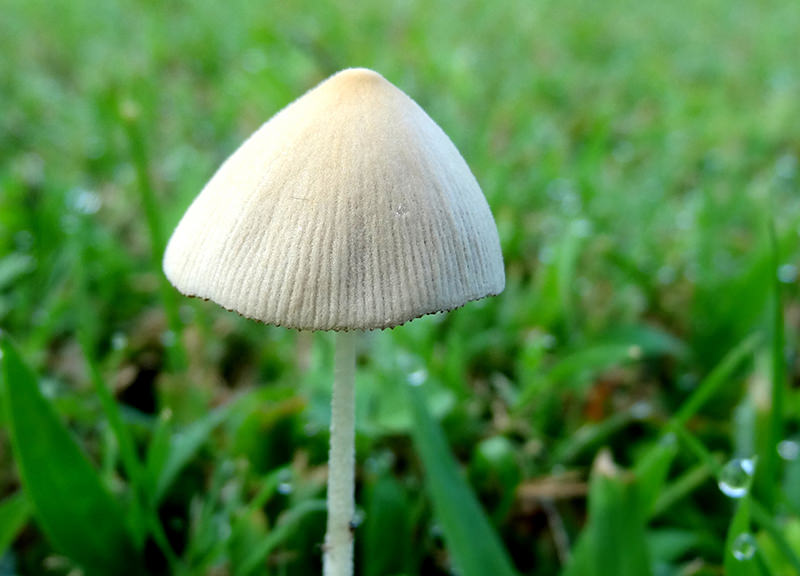
Perennial plants are the foundation of permaculture gardens. They’re generally more expensive than annuals and can take longer to produce, but once established, these powerhouses will deliver huge harvests with minimal effort.
Permaculture gardens are usually designed with plant guilds in mind. Guilds are groupings of plants that co-exist and benefit one another and are often organized in round, spiral or otherwise nonlinear beds. A typical guild includes a small number of large canopy food or fuel trees surrounded by smaller fruit or nut trees. Under and amongst those, shorter fruit brambles, herbs, flowers and fungi thrive. As you begin to build your permaculture garden, consider adding these time-tested crops.
1. Prunus Species (Plums and Cherries)
Sub-canopy fruit trees can provide food, fuel and wildlife habitat. In most regions of the United States, you can find locally adapted and disease-resistant plum and cherry varieties (pictured above). These will be easy to take care of because they are habituated to the conditions of your environment.
All fruit trees benefit from being planted as dormant bare roots, usually in the late winter. Keep the trees watered and their bases grass- and weed-free for the first few years as the trees establish their roots. For best production and to combat disease, prune branches at least once a year and plant compatible varieties for pollination.
2. Hazelnuts (Corylus avellana)

Hazelnuts are shrubby trees that adapt to many growing conditions. They grow quickly, and harvest begins as early as year three. Hazelnuts require multiple varieties for cross pollination. Look for hybrid types for best yield and disease resistance.
While hazelnuts are not commonly consumed in the United States, they’re a great source of fat and nutrition. The husked nut clusters look like ornamental flowers, and the fall colors are also decorative.
3. Ribes species (Currants, Raspberries, Gooseberries)

Ribes are shrubby fruiting bushes. They can produce fruit in the first season and grow rapidly to fill in an area or an understory. You should plant Ribes as bare roots in late-winter, but they are adaptable to transplanting almost any time of year. In fact, many permaculture gardeners make friends by sharing runners with the community. There are many varieties of berries; choose one based on flavor, seasonality and yield. Once established, Ribes need very little care beyond pruning to fit your space, though trellis system for raspberries can ease harvest.
4. Asparagus (Asparagus officinalis)

Asparagus is a bountiful vegetable that requires just one planting. The tender buds are among the first growth observed and harvested in the spring: a welcome return to gardening after winter. Asparagus prefers well-drained soil. Plant it bare root in late winter, and mulch or weed until the patch is established. Harvest after the third year and for decades to come.
5. Pollinator and “Plant Paramedic” Plants

A garden is not complete without swarms of insects. Attract pollinators, pest predators and beautiful butterflies by including plenty of flowers in your permaculture design. If possible, find native wildflowers to attract native insects—some you may have once considered weeds!
“Adaptable and tenacious, dandelion is a plant paramedic,” says Elizabeth Neer-Petruziello, a permaculture homesteader in Columbus, Ohio. “The roots of Taraxacum officinale accumulate a wide variety of minerals, which are then made available to those who live nearby or consume it. All parts of the dandelion are edible, albeit with a learning curve, and pollinators love it for its early spring flowering, too.”
Comfrey, chives, and purslane are other hardy edible leafy greens that benefit surrounding plants. Plant them under trees and brambles and cut them back a few times a year. Leave the greens on the ground to return nutrients to the soil if you aren’t consuming them.
6. Mushrooms

Fungus isn’t in the plant kingdom, but few permaculture gardens are complete without, at the very least, awareness of mushrooms. Several edible mushrooms, including oyster and shiitake, can be cultivated in shady spots by inoculating wood or straw with mushroom spawn. Encourage wild mushrooms in your garden by simply allowing shady wet areas to go unmown. Join a local mycological society to identify which are medicinal or edible. Even if you never harvest mushrooms, any fungus you allow to grow on your property will increase the soil quality by encouraging a more complete decomposition system.
Most permaculture gardeners begin with a few of these plants in a small guild and expand over time, tucking more types in here and there as space and money allows. However you proceed with perennials, be patient and in a few years, you’ll reap the rewards.




